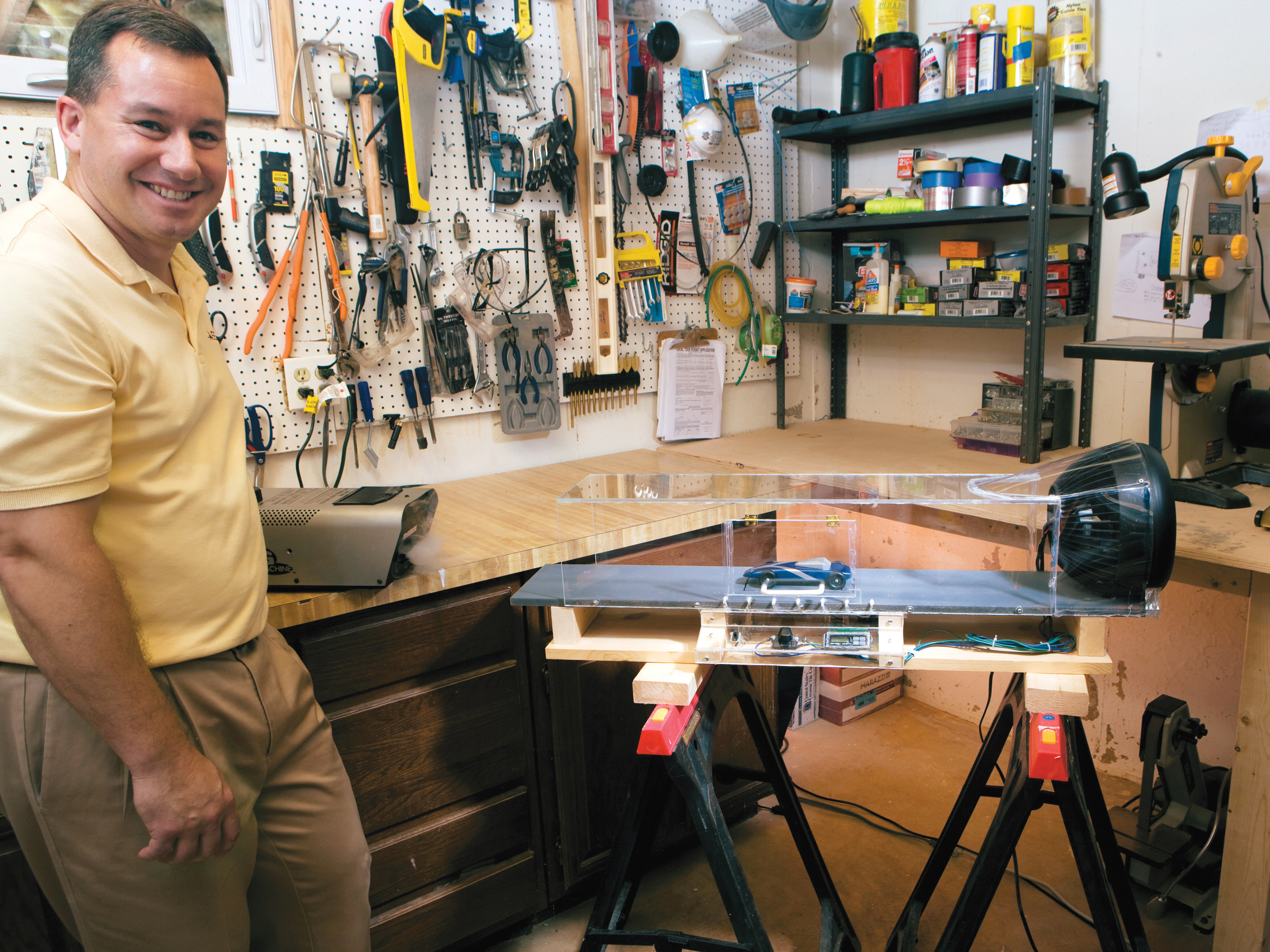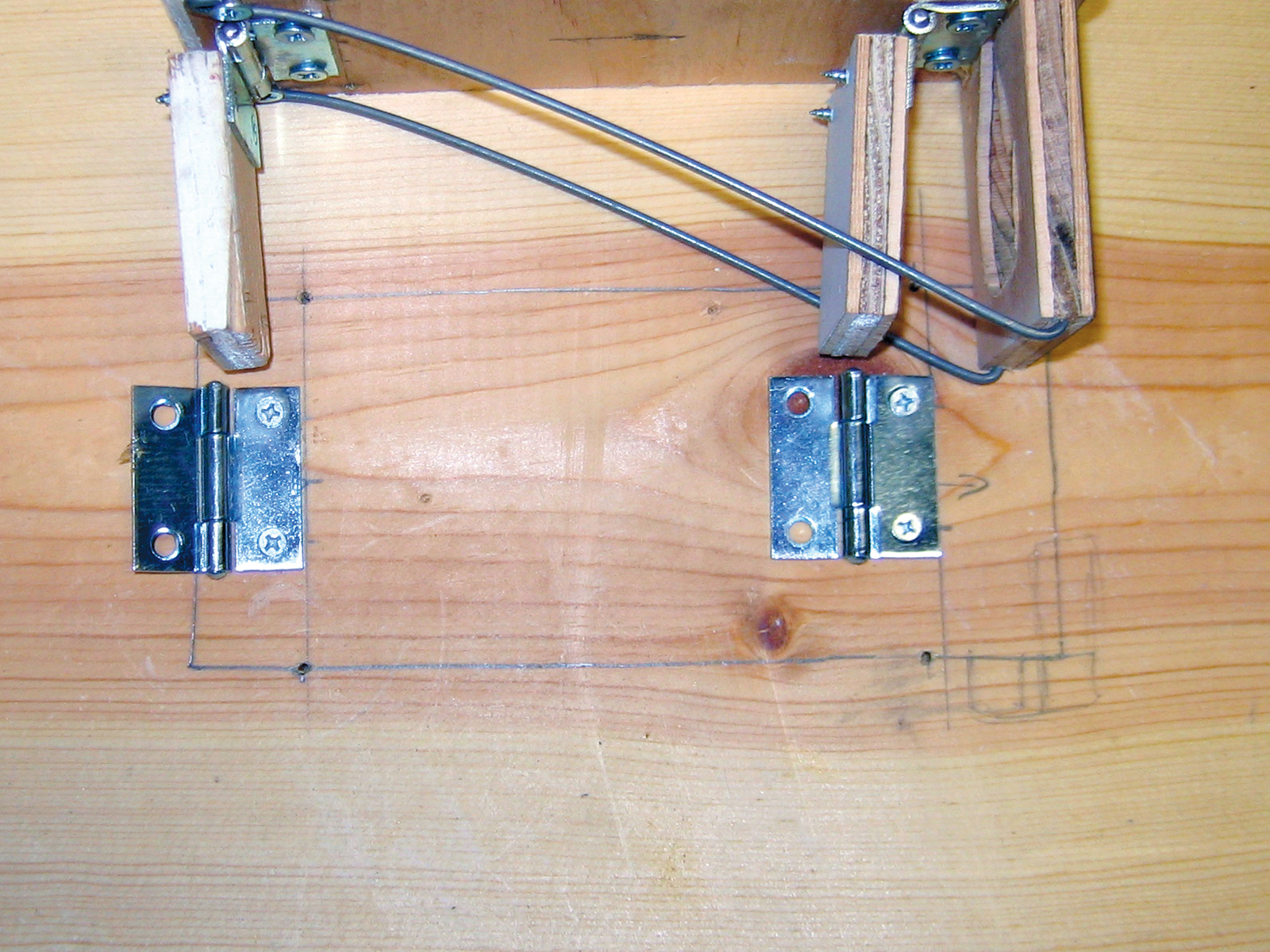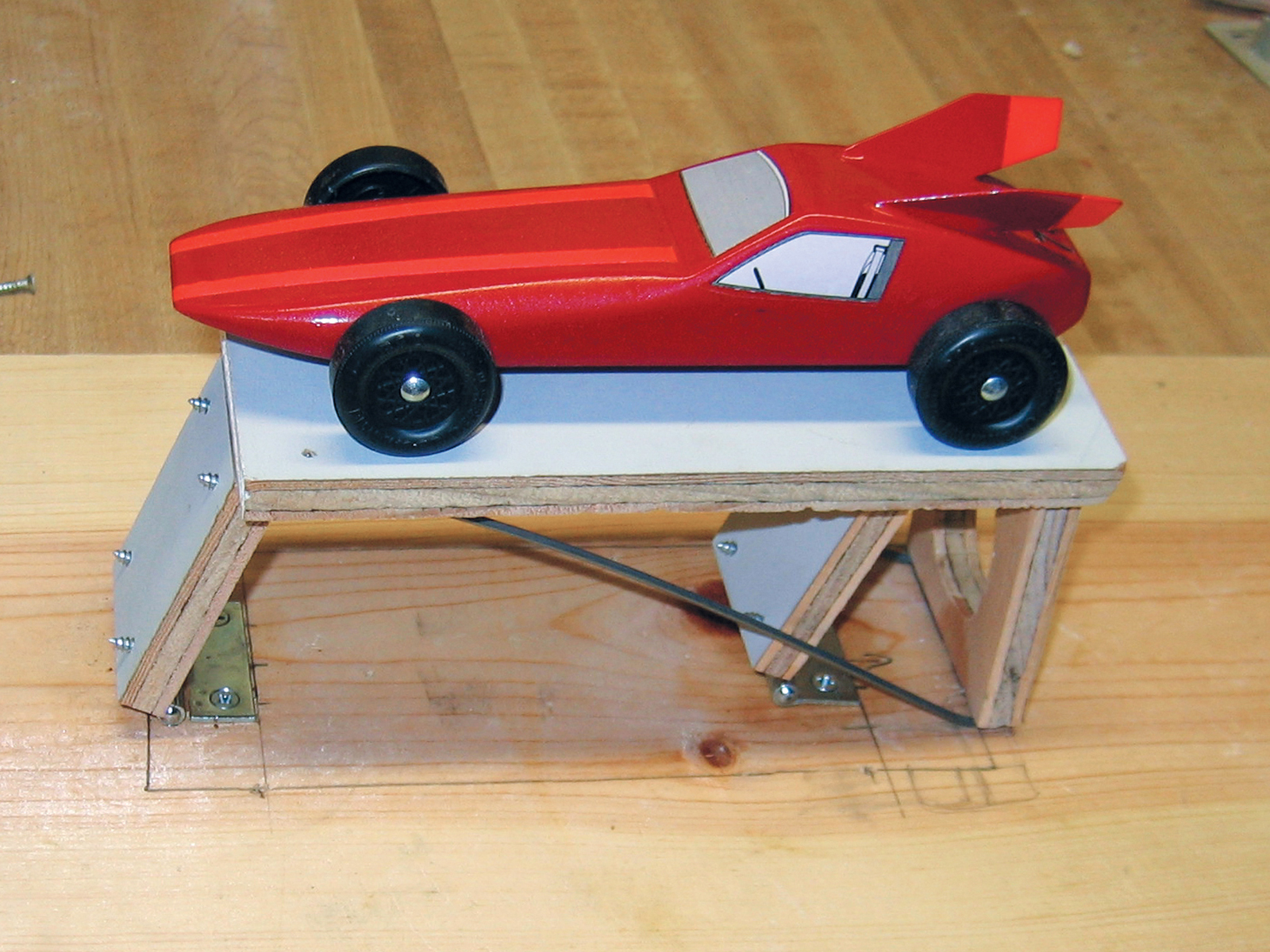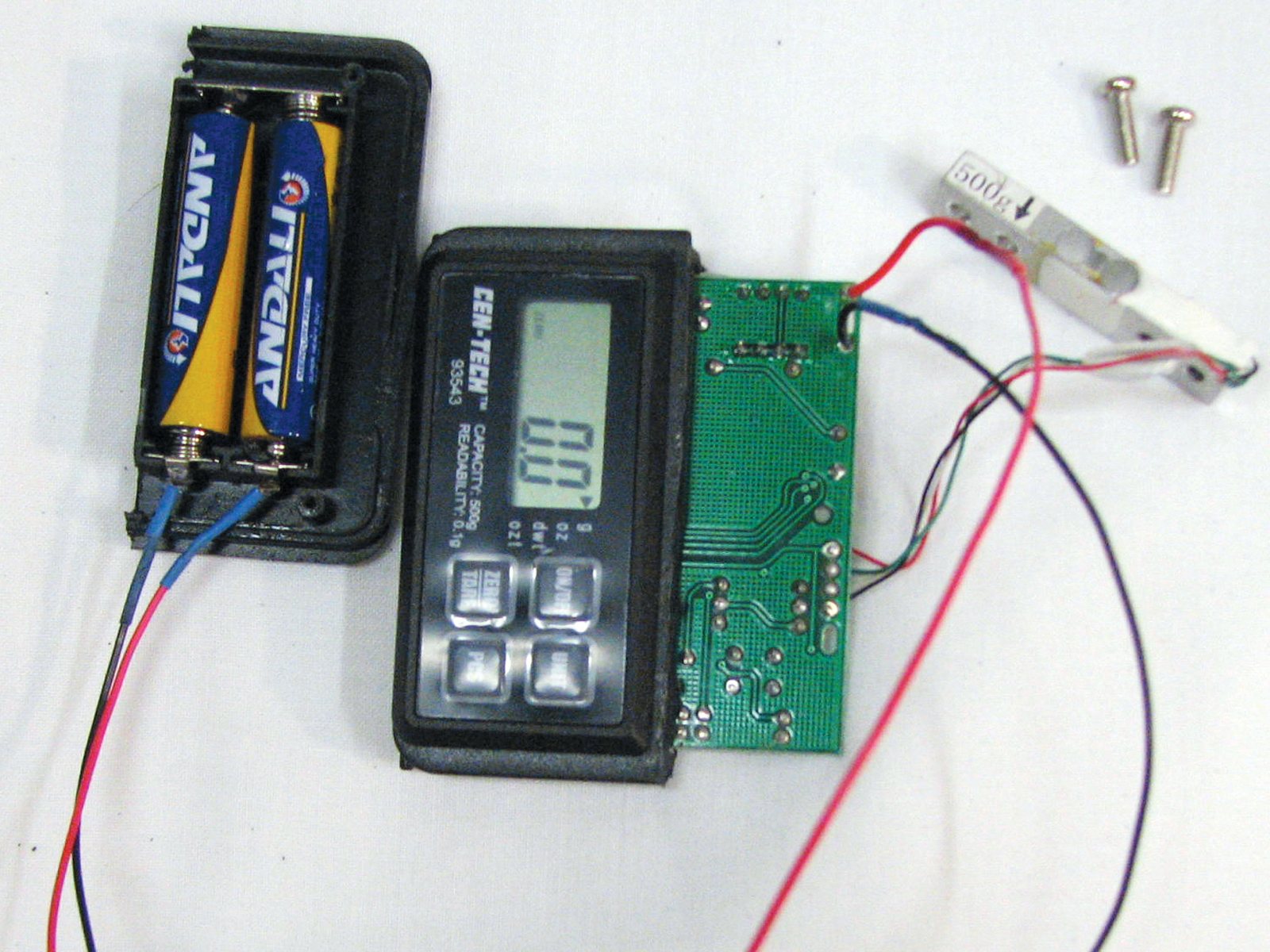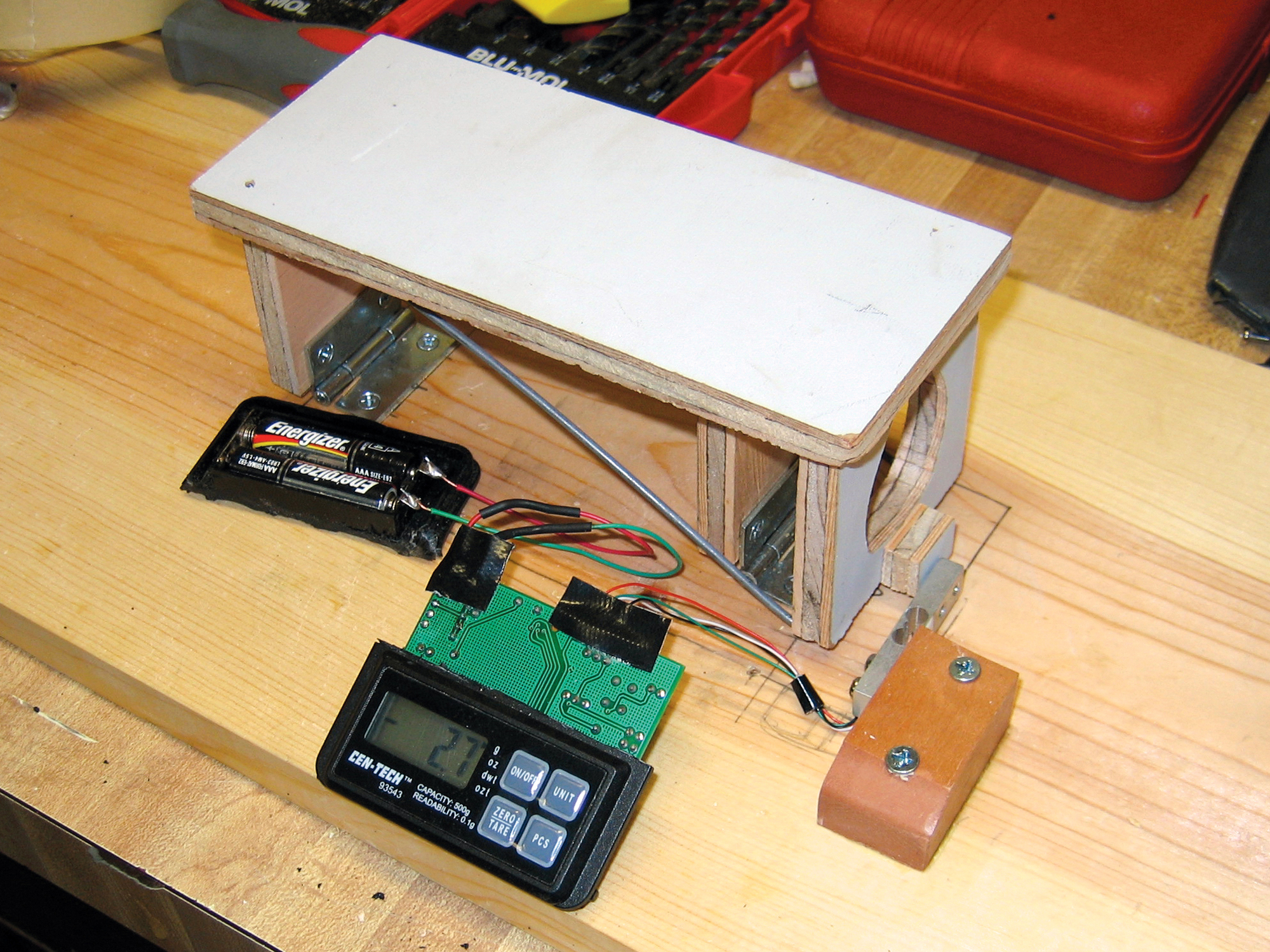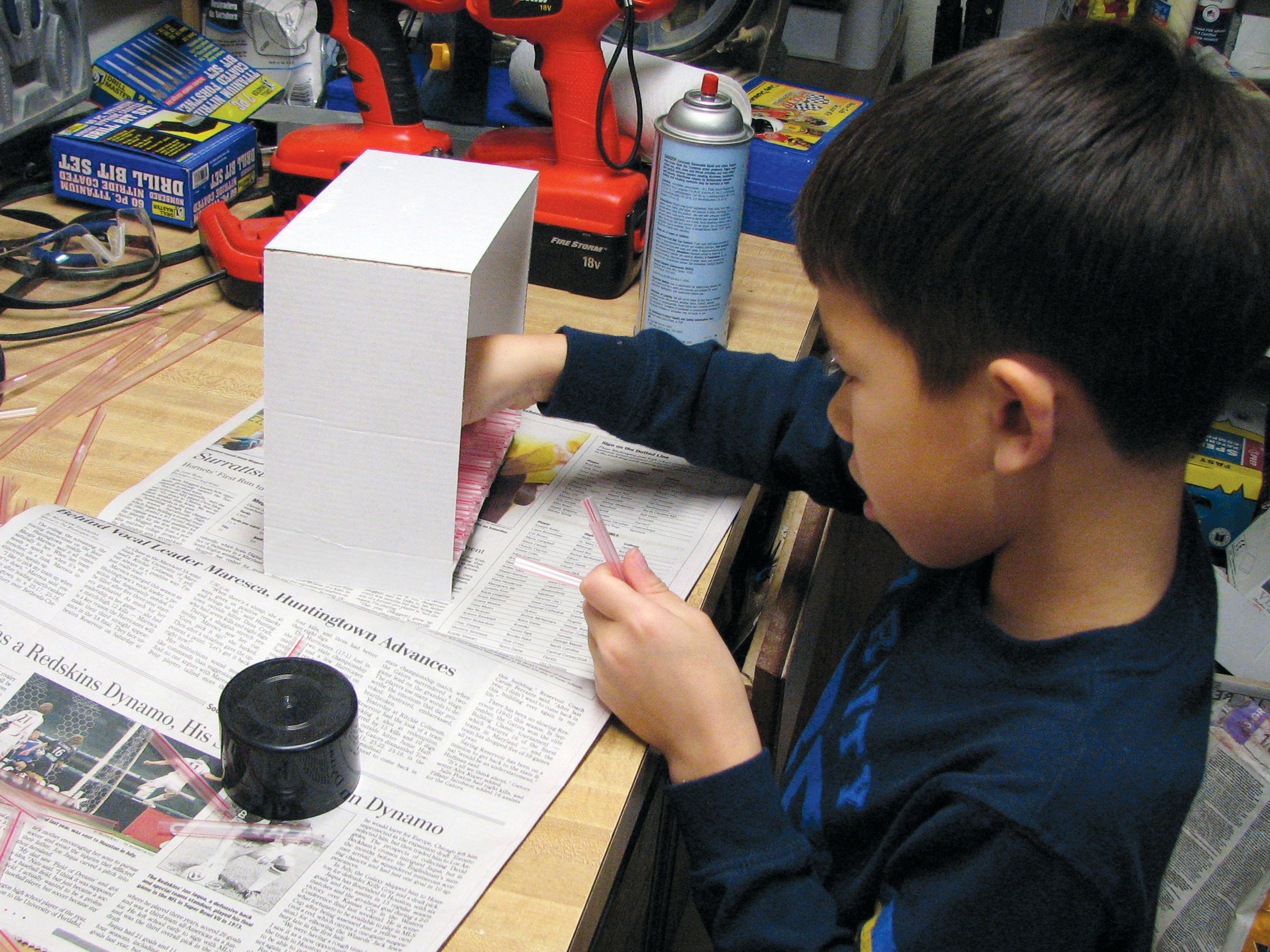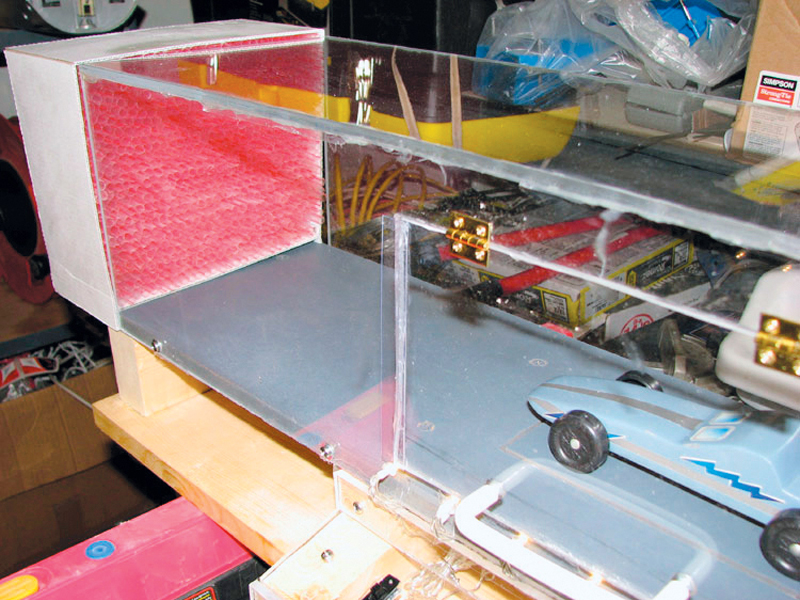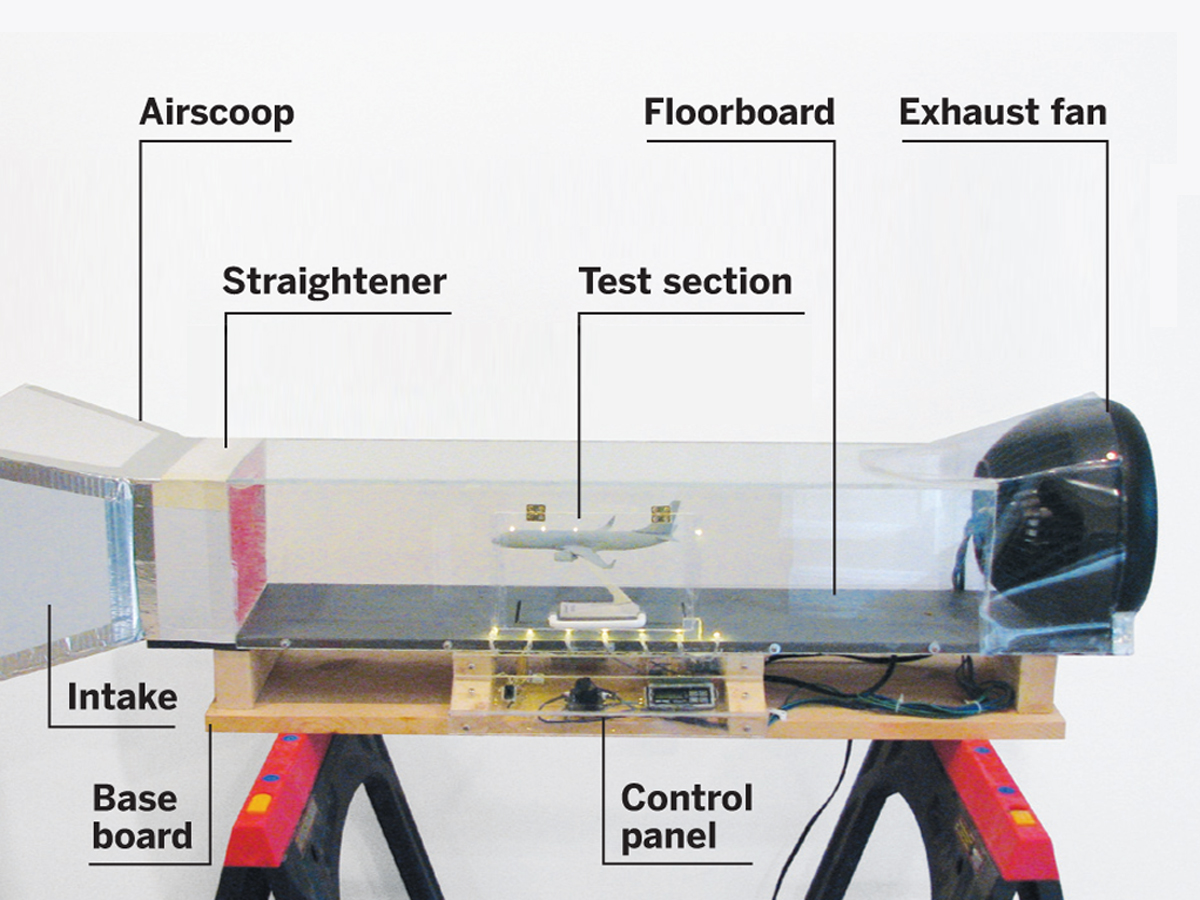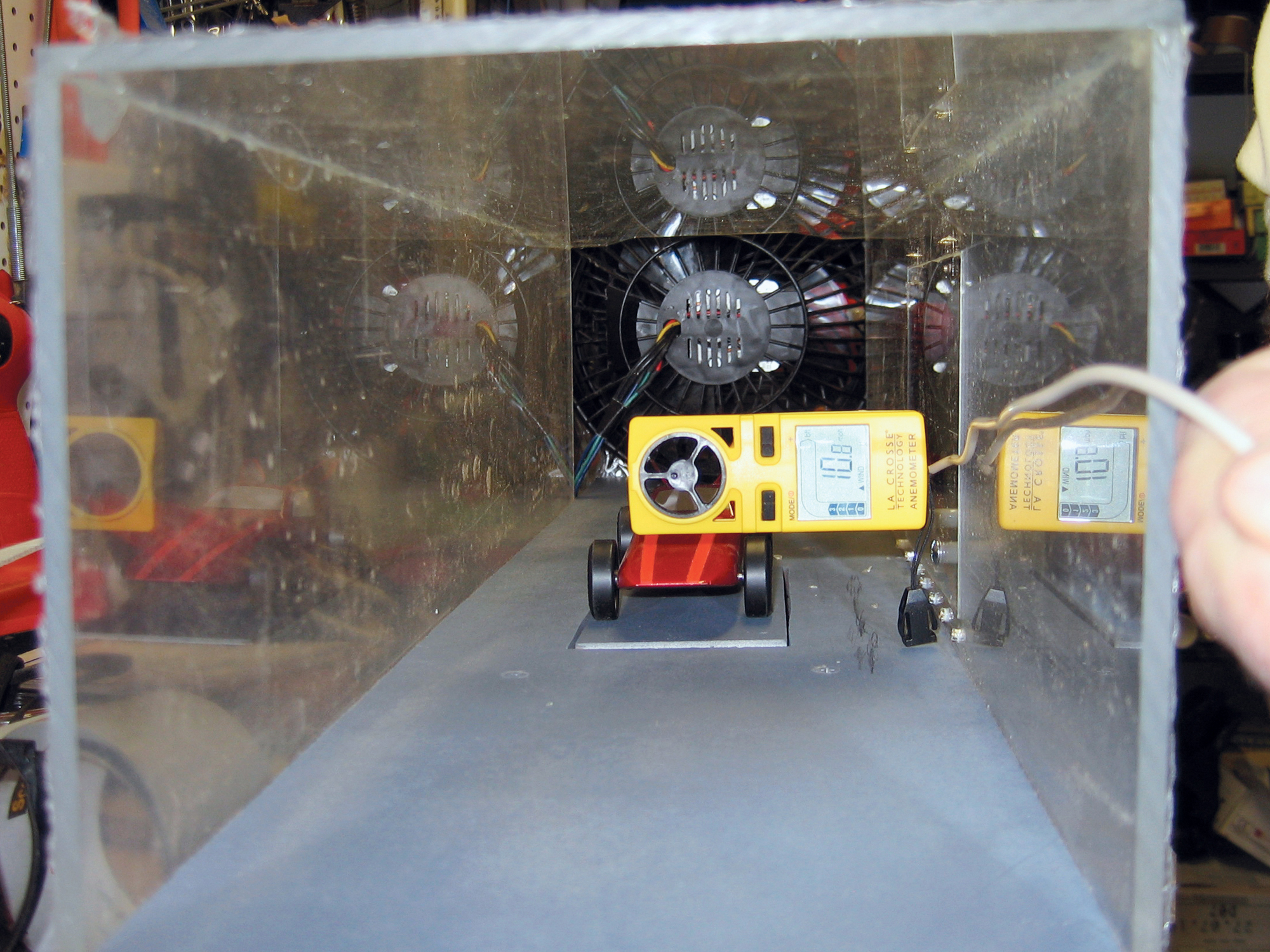Last year, at the annual Pinewood Derby race for our local Cub Scout pack, we used a Matchbox radar gun (see MAKE, Volume 10, page 148) to measure the top speeds of several cars. We learned that they reached 10mph–11mph at the bottom of the slope. Armed with this knowledge, along with some Lexan plastic, a fan, and a precise digital scale, it was time to build a wind tunnel for this year’s event.
I wanted to keep all the elements of the tunnel visible, so the Scouts could have fun seeing and learning how it worked. It’s a simple, open-loop type of tunnel powered by a household fan at the exhaust end (having the fan blow air into the tunnel would generate too much turbulence).
The highlight of this project is the test stand and its very accurate drag gauge. The stand holds test objects in the middle of the tunnel, and is supported by 2 hinged struts that pivot backward. When wind pushes against the object, the struts move a back plate that pushes into a force beam, which measures the force. The force beam is hacked out of an inexpensive digital scale that measures down to 0.1 gram.



